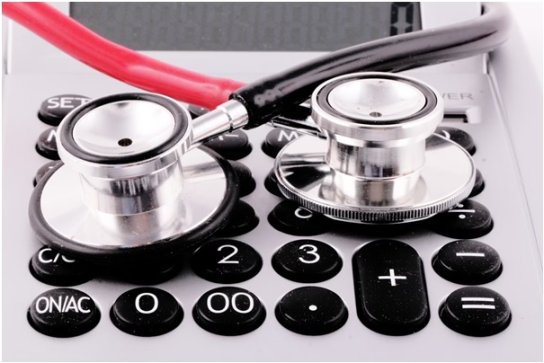Ever been hurt in an accident and wondered what you can actually get paid for?
Most people think personal injury is just about getting money for hospital bills. Maybe some lost wages if you’re lucky. But that’s only scratching the surface of what you’re actually entitled to.
Here’s the problem:
Insurance companies love when people don’t understand the different types of damages. It means they can lowball you on settlements and you won’t even know what you’re missing out on.
The truth? There are three main categories of personal injury damages, and understanding them can be the difference between getting a fair settlement and leaving serious money on the table. With 95% of personal injury cases settling before trial, knowing what you’re entitled to is absolutely crucial for negotiations.
Table of Contents
What you’ll discover:
- Economic Damages: The Easy Stuff to Calculate
- Non-Economic Damages: The Big Money Most People Don’t Know About
- Punitive Damages: When the Court Wants to Make an Example
- State Laws Can Make or Break Your Case
- Why You Need a Personal Injury Law Firm

Economic Damages: The Easy Stuff to Calculate
Economic damages are the straightforward ones. These are losses you can actually put a dollar amount on because you have receipts, bills, and records to back them up.
Here’s what falls under economic damages:
- Medical bills – Everything from ambulance rides to surgery costs
- Lost wages – Money you missed out on while recovering
- Future earning capacity – How the injury affects your ability to make money long-term
- Property damage – Your busted car, damaged phone, whatever got wrecked
- Rehabilitation costs – Physical therapy, occupational therapy, assistive devices
The average auto liability claim for bodily injury hit $26,501 in 2022, but that’s just the starting point. If you’ve been injured in St Louis, your medical expenses alone could easily blow past that number.
But here’s what most people miss…
Future economic losses are where the real money is. If your injury screws up your ability to work or earn the same income, you can recover damages for:
- Reduced earning capacity over your entire working life
- Ongoing medical treatment that’ll stretch for years
- Future surgeries you’ll need down the road
- Home modifications if you end up with a disability
The secret to maximizing economic damages? Document absolutely everything. Every receipt, every medical bill, every hour you missed from work. This stuff forms the backbone of your entire claim.
Non-Economic Damages: The Big Money Most People Don’t Know About
Non-economic damages are where things get interesting. These compensate you for losses that don’t come with a price tag attached. And here’s the kicker – they’re often worth more than your actual medical bills.
Common types of non-economic damages:
- Pain and suffering – The physical agony you’re dealing with
- Mental anguish – Anxiety, depression, PTSD from the accident
- Loss of enjoyment – Can’t play sports, travel, or do hobbies you love
- Disfigurement – Permanent scars or physical changes
- Loss of consortium – How the injury affects your marriage or relationship
Here’s how lawyers figure out what these are worth:
The multiplier method takes your total economic damages and multiplies by a number between 1.5 and 5. Worse injuries get higher multipliers. So if you racked up $50,000 in medical bills and they use a multiplier of 3, your pain and suffering damages would be $150,000.
The per diem method assigns a daily dollar amount to your suffering, then multiplies by however many days you’re expected to deal with it.
Pretty cool system, right?
But here’s the catch…
Nine states now cap non-economic damages in personal injury cases. These caps can seriously limit your recovery, especially in catastrophic injury cases. A skilled personal injury law firm will know exactly how to work within these limitations to get you maximum compensation.
Punitive Damages: When the Court Wants to Make an Example
Punitive damages are totally different. They’re not about compensating you for losses – they’re about punishing the defendant and making sure nobody else pulls the same stunt.
Punitive damages only get awarded when:
- The defendant’s behavior was completely reckless or intentional
- There was gross negligence with total disregard for people’s safety
- The defendant’s actions showed malice or fraud
Real examples where punitive damages come into play:
- A trucking company that knowingly lets drivers work illegal hours
- A manufacturer that hides known defects in their products
- A drunk driver who plowed into someone
In Texas, punitive damages max out at $12 million or three times the compensatory damages, whichever is higher. Other states have similar caps, which is why working with attorneys who know your state’s laws inside and out is crucial.
State Laws Can Make or Break Your Case
Here’s something that’ll blow your mind:
Your state’s laws can dramatically change how much you can recover. The damage caps vary like crazy:
- 26 states cap non-economic damages in medical malpractice cases
- 9 states cap non-economic damages in ALL personal injury cases
- Most states have some kind of cap on punitive damages
California caps non-economic damages in medical malpractice at $250,000, while New York doesn’t have caps at all. That’s a massive difference depending on where your accident happened.
The collateral source rule also plays a huge role. This rule stops defendants from reducing what they owe you by the amount your insurance already covers. So if your health insurance paid $20,000 in medical bills, the defendant still owes you that full amount.
Why You Need a Personal Injury Law Firm
The personal injury law industry is worth $57.3 billion in 2024. That’s serious money, and insurance companies know it. They’ve got teams of lawyers whose entire job is to minimize what they pay you.
Here’s why working with a personal injury law firm is a no-brainer:
- They know your case’s real value – not just the obvious medical bills
- They have connections with expert witnesses who can make or break your claim
- They understand your state’s damage caps and how to navigate them
- They’re skilled negotiators who can squeeze every penny out of settlements
The statistics don’t lie – people who hire lawyers get higher payouts than those who go it alone, even after paying attorney fees.
How to Maximize Your Damage Recovery
Want the best possible outcome? Here’s your game plan:
- Get medical attention immediately – even if you think you’re fine
- Keep records of everything – photos, medical records, lost wages
- Document how the injury affects your daily life – keep a journal
- Never accept the first settlement offer – it’s always lowball
- Hire an experienced personal injury law firm before talking to insurance companies
Remember, 62 million Americans seek medical attention for preventable injuries every year. You’re not alone. The legal system is built to help you recover fully from your losses.
Wrapping It Up
Personal injury damages go way beyond just medical bills and lost wages. They cover your entire experience – the physical pain, emotional trauma, lost income, and long-term impact on your life. Understanding the three main types of damages – economic, non-economic, and punitive – gives you the full picture of what you can actually recover.
The personal injury system recognizes that money can’t undo what happened to you, but it can help restore your financial stability and give you resources for recovery. With the right legal representation, you can navigate the complex damage calculations and state laws to get the compensation you actually deserve.
When dealing with personal injury claims, understanding the full scope of damages is crucial for securing fair compensation. This includes not only immediate medical expenses but also long-term impacts such as loss of earning capacity and emotional distress. For those navigating these complex legal waters, consulting experienced injury lawyers in Orlando can provide invaluable guidance. These professionals are adept at evaluating the nuances of each case, ensuring that all potential damages are considered and that clients receive the compensation they deserve. Their expertise can make a significant difference in the outcome of a personal injury claim, offering peace of mind during a challenging time.
Don’t let insurance companies shortchange you. Your injuries deserve full compensation across all categories of damages.




